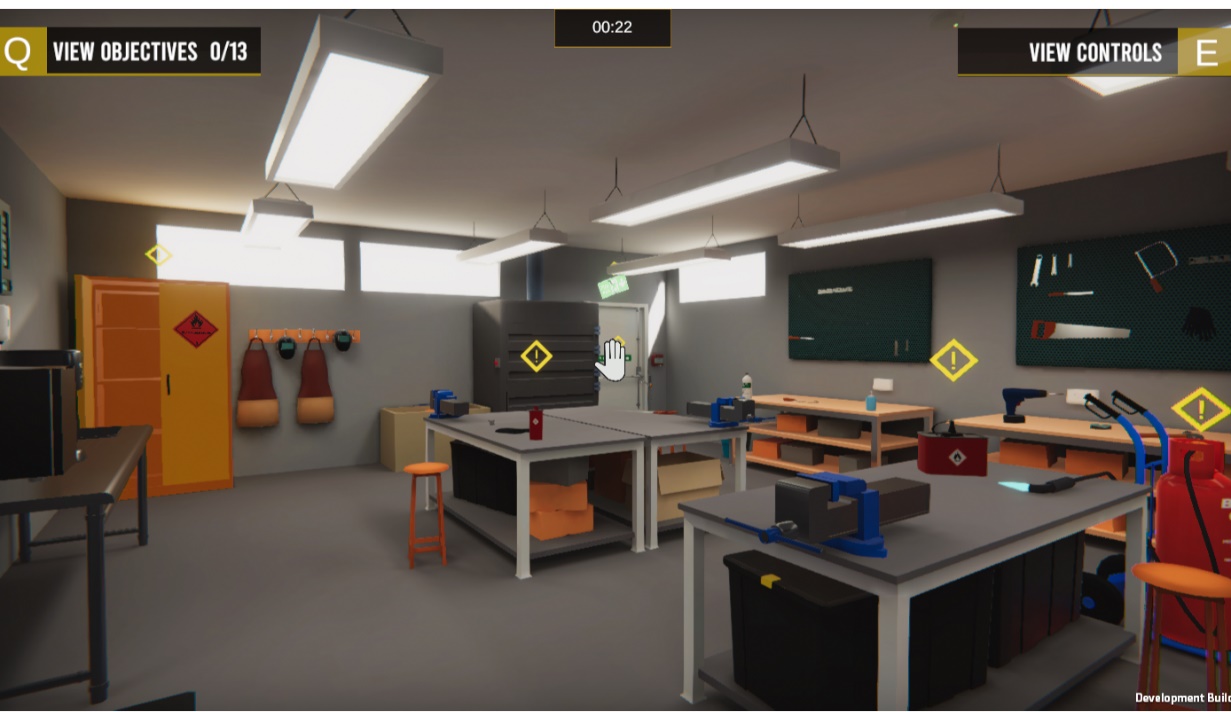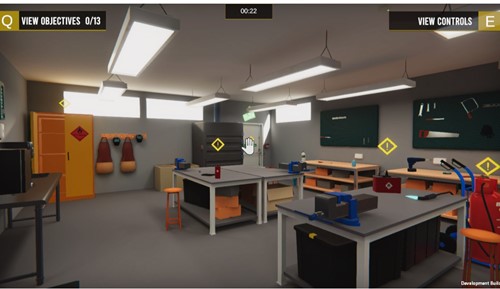Business Safety Week will run from 11th – 17th September. It's an opportunity for the National Fire Chiefs Council (NFCC), supported by Fire and Rescue Services to make small and medium sized businesses aware of their fire safety responsibilities in the workplace, and is a chance to let these businesses know that there is help and advice available for them all year round.
From 1 October fire safety legislation is changing in England and Wales.
Section 156 of the Building Safety Act will commence. All businesses will need to record a fire risk assessment and fire safety arrangements in full – regardless of the number of employees, and size or type of business.
For more information, visit: Fire safety risk assessment: 5-step checklist - GOV.UK (www.gov.uk)
Business Fire Safety Awareness Tool
This is an interactive tool to help small business owners understand their legal duties for fire safety in the workplace.
As a new owner or manager of a small business, the fire safety law for the workplace can seem quite daunting. This tool has been designed to give an interactive experience and at the same time give you a general overview of your responsibilities following a fire risk assessment on your premises. As you work your way around the workplace, correcting the identified issues and making it safer, you will be tested on your general fire safety knowledge.
Now test yourself and see what you already know – click on the screenshot below to enter.
(If you are having trouble controlling movement around the tool, please look to reduce the sensitivity of your mouse).
Please note that this tool is for general fire safety awareness in the workplace, it is not intended as training tool for completing a Fire Risk Assessment.
Most Common Issues in Shops and Licensed Premises
Fire Risk Assessment
The Fire Risk Assessment is a vital part of a business’s fire safety arrangements. It is there to identify all notable fire safety hazards and risks, so that suitable and sufficient control measures can be put in place to either mitigate the risk or lower it to a reasonable level. There is new legislation that means all businesses have to have a full written Fire Risk Assessment by a suitably competent person.
Firefighting and fire detection
“Firefighting” in this context means, measures put in place to allow a trained member of staff to put out a small fire where appropriate. This can be in the form of a fire blanket or appropriate fire extinguishers. The number and type of fire extinguisher will be determined by the Risk Assessment.
Fire detection is important. It allows a fire to be detected early which in turn allows people adequate time to evacuate. Depending on the size and complexity of the building, this can range from a person giving a verbal alert, to an electrical mains powered automatic fire detection system.
Where you have employed a competent fire risk assessor, they will be able to advise on the type of detection and warning you need within your business. It is important to note that if your business is situated in a building where there is a flat or other residence, you may be required to have an electrical mains powered interlinked automatic fire detection system so that other relevant persons can also be warned in the event of a fire and evacuate if necessary.
Procedures for serious and imminent danger and danger areas
This relates to procedures that you have in place for the safety of people. Depending on the size and complexity of the building, this may be as simple as nominating an employee to alert others in the event of a fire and ensure people evacuate; or could be more advanced by appointing a trained member of staff to check the automatic fire detection system and sweeping the building, ensuring everyone gets out. Regardless of the procedures implemented, they must be assessed ensuring they are suitable and sufficient. It is recommended to have procedures written down and kept with your fire safety related documentation. Where a competent fire risk assessor is employed, they should be able to assist in determining the appropriate procedures. It’s important to note that staff are trained and aware of any procedures, no matter how simple.
Provision of information to employees
Any significant findings that are identified by the fire risk assessment should be addressed with suitable and sufficient measures put in place. Employees should also be informed of both the risks and any control measures that are put in place for people’s safety. This relates to Article 15 (above) and Article 22 (Co-operation and co-ordination), which means that where there is more than one person/business occupying a building (for example, multiple businesses within a building, flats above businesses, etc) their safety must be considered with regards to fire safety and any procedures that are in place cannot be at the detriment of another party’s fire safety. For eaxmple, locking or blocking doorways or gates for security reasons that are required for others to use to escape to a place of safety in the event of a fire.
Legislation
• Regulatory Reform (Fire Safety) Order 2005
• Fire safety: guidance for those with legal duties
• Making your small non-domestic premises safe from fire
Fire Risk Assessment Guides
A number of fire safety risk assessments have been produced by Communities and Local Government which will tell you what you have to do to comply with fire safety law.
• Fire Risk Assessment: Healthcare premises
• Fire Risk Assessment: Open air events and venues
• Fire Risk Assessment: Theatres, cinemas and similar premises
• Fire Risk Assessment: Animal premises and stables
• Fire Risk Assessment: Means of escape for disabled people
• Fire Risk Assessment: Transport premises and facilities
• Fire Risk Assessment: Large places of assembly
• Fire Risk Assessment: Sleeping accommodation
• Fire Risk Assessment: Factories and warehouses
• Fire Risk Assessment: Offices and shops
• Fire Risk Assessment: Small and medium places of assembly
• Fire Risk Assessment: Educational premises
• Fire Risk Assessment: Residential care properties
The fire safety risk assessments are guides that have been designed so that a responsible person, with limited formal training or experience, should be able to carry out a fire risk assessment and make sure that they are meeting the requirements of Regulatory Reform (Fire Safety) Order 2005.


